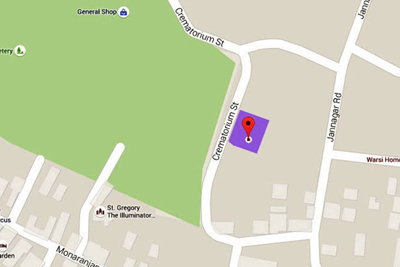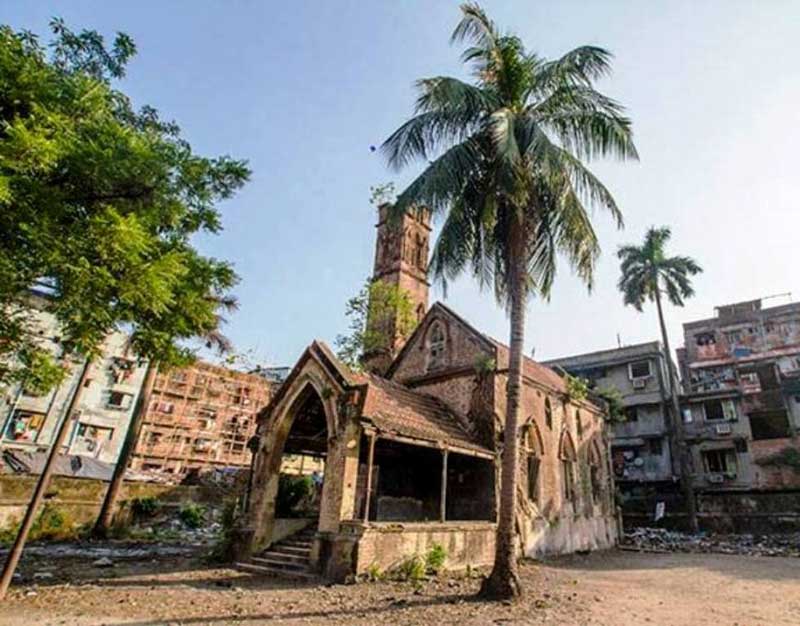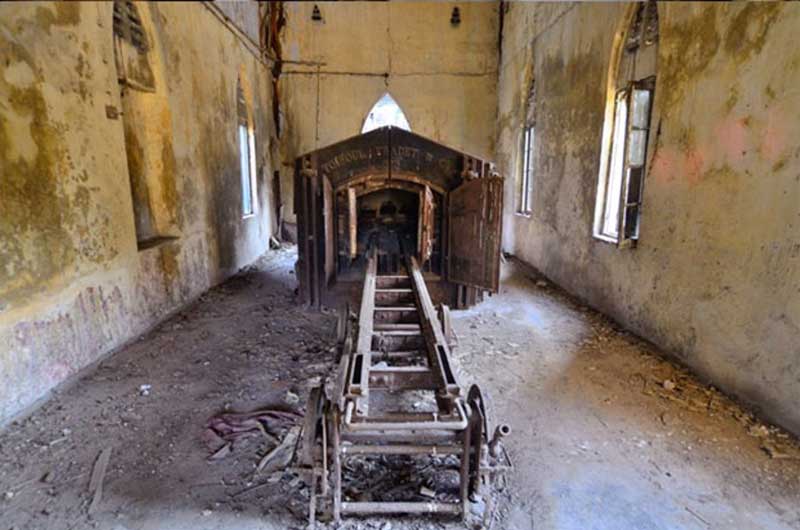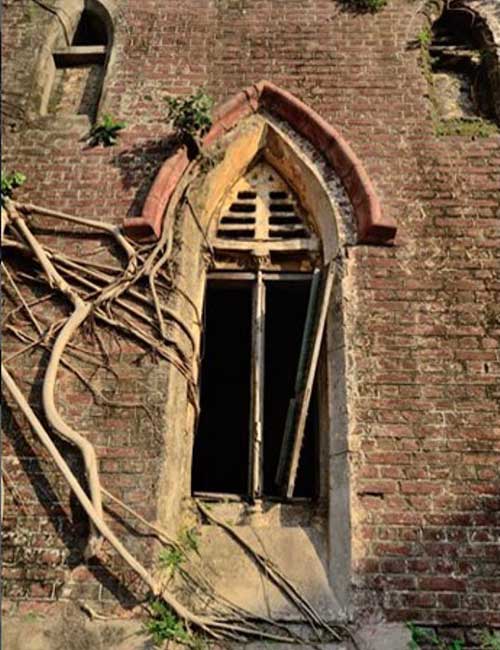
While studying in higher classes in school, I often visited the Park Circus Cemetery with one of my friends. We liked the calm, quiet and serene atmosphere of the place. There we could see a ghost like structure at the back side of the Cemetery. At first glance it may appear to be a small church, complete with a bell tower, red tiled roof, a projected porch, long flight of stairs and pointed Gothic arches. We were told by the locals that it was a crematorium of the Persians on Crematorium Street. But that was only half true.

Later we came to know that, it was actually a gas crematorium for the Christians and what appeared to be a bell tower with Gothic windows is actually a chimney. We came to know that, the bodies were cremated in the crematorium and after the process of cremation, the ashes were collected in urns and were buried in small plots. This space saving process of burial is known as urn burial.
Usually, the Christians bury their dead. However, since the burial grounds are limited and expensive, even in the Western countries, often the bodies are cremated in a crematorium and the ashes are collected in urns, which are in turn buried in small plots. Many British families in colonial Calcutta also wanted their loved ones to be buried in the land of their birth, rather than to be buried in India, a country thousand miles away from England.
But, shipment of a body involved lot of money and it was much less expensive to cremate the body here and send the urn, containing the ashes, for burial in the British Isles. However, they disliked the idea of cremation in open grounds near the Hoogly River. To solve the problem, the authority took the initiative to construct a crematorium for the Europeans near the Lower Circular Road Cemetery and the crematorium was built in 1906, by Toisoul Fradet & Co, a French company based in Paris.



The gas crematorium, located at 2 Crematorium Street is a brick-and-mortar structure with a tower that was used as a chimney and with Gothic arches at its entrance. It was really a welcome relief for the British people working in India. However, apart from the native Christians, the crematorium was also used by some members of the Brahmo community of Calcutta. The eminent scientist, Sir Jagadish Chandra Bose, who was a Bramho, was cremated at this gas crematorium, after his death on 23 November 1937.

Started in 1906, the crematorium functioned till the early 1980s and had to be closed because of erratic gas supply. For the last time it was used in the late Seventies. However, why it was not converted to an Electric crematorium, is a million dollar question. According to some sources, the Calcutta Municipal Corporation (CMC) has a plan to turn the crematorium into a mortuary for six bodies.
